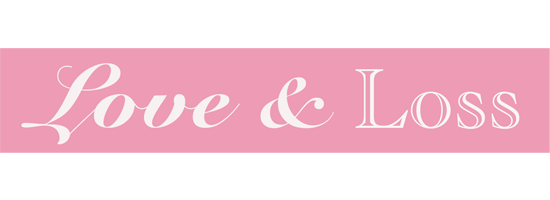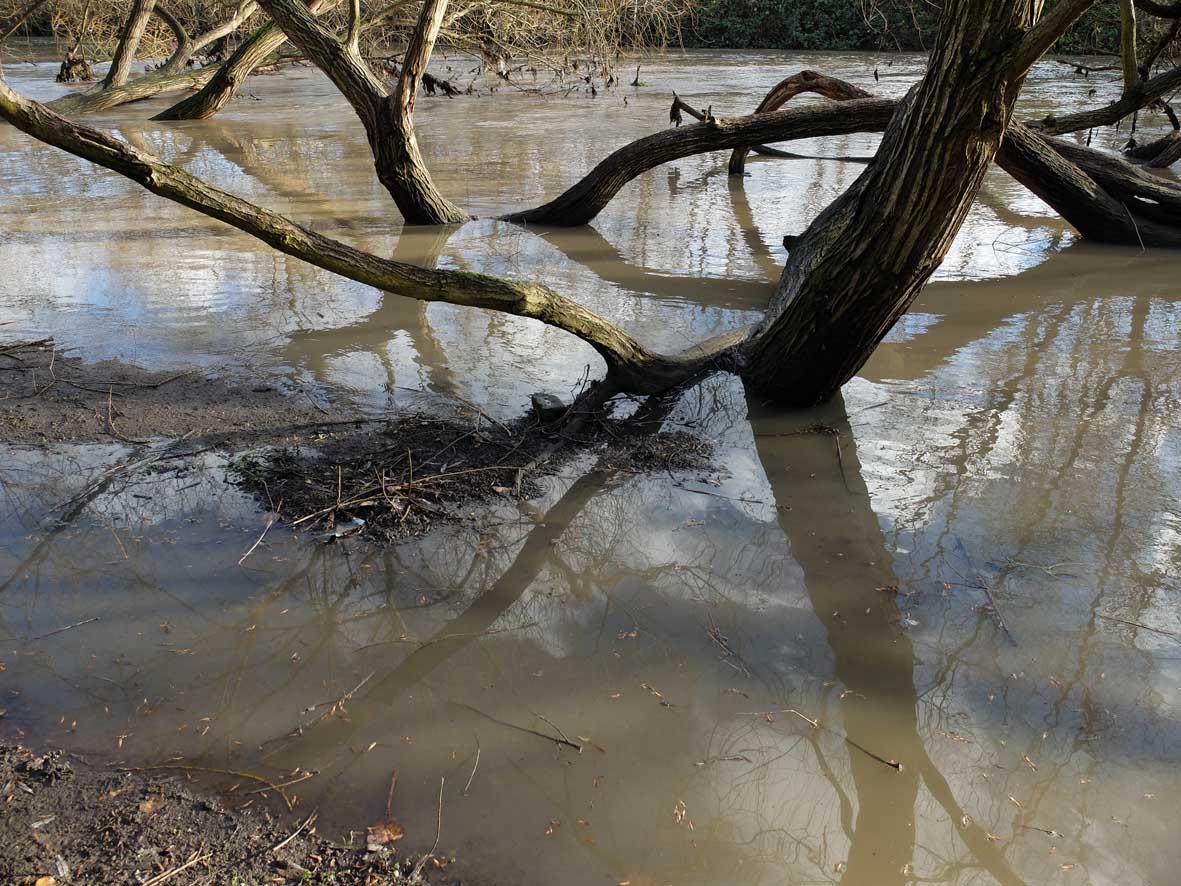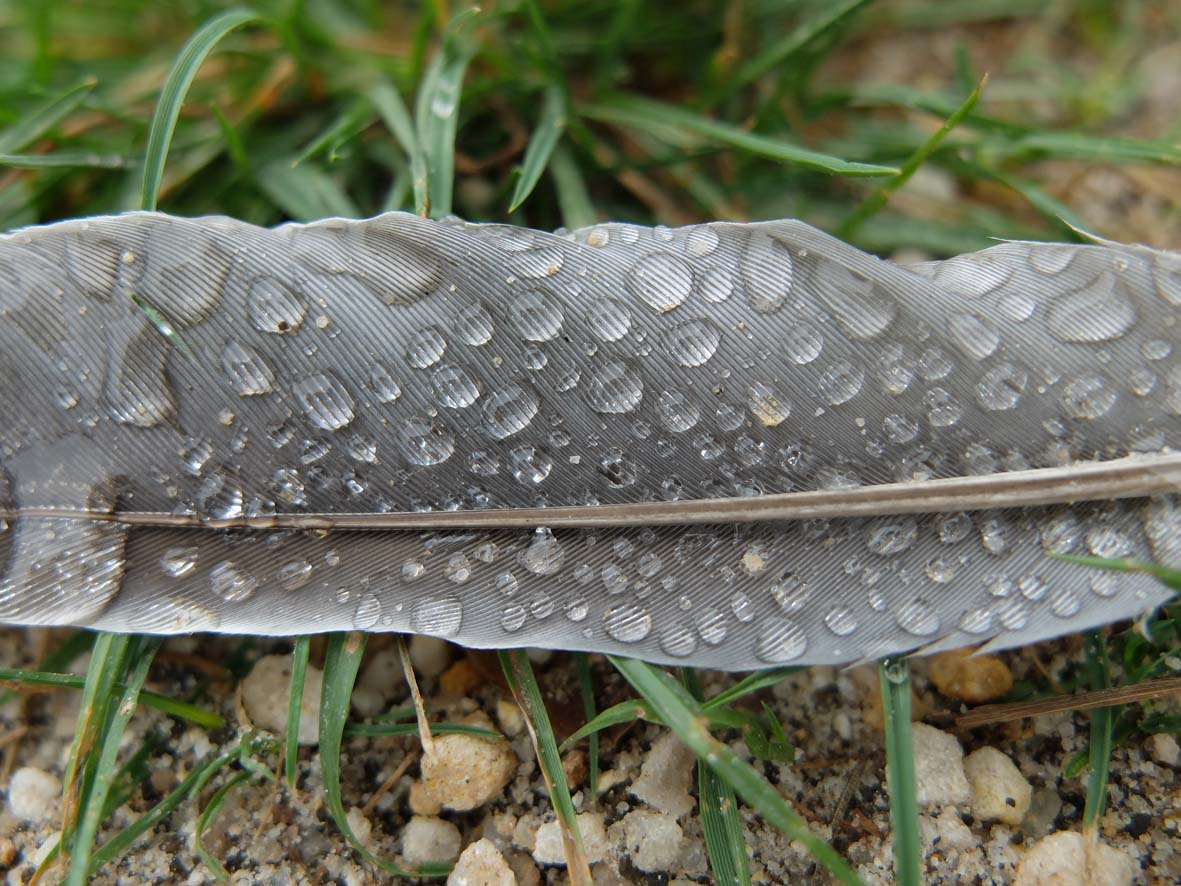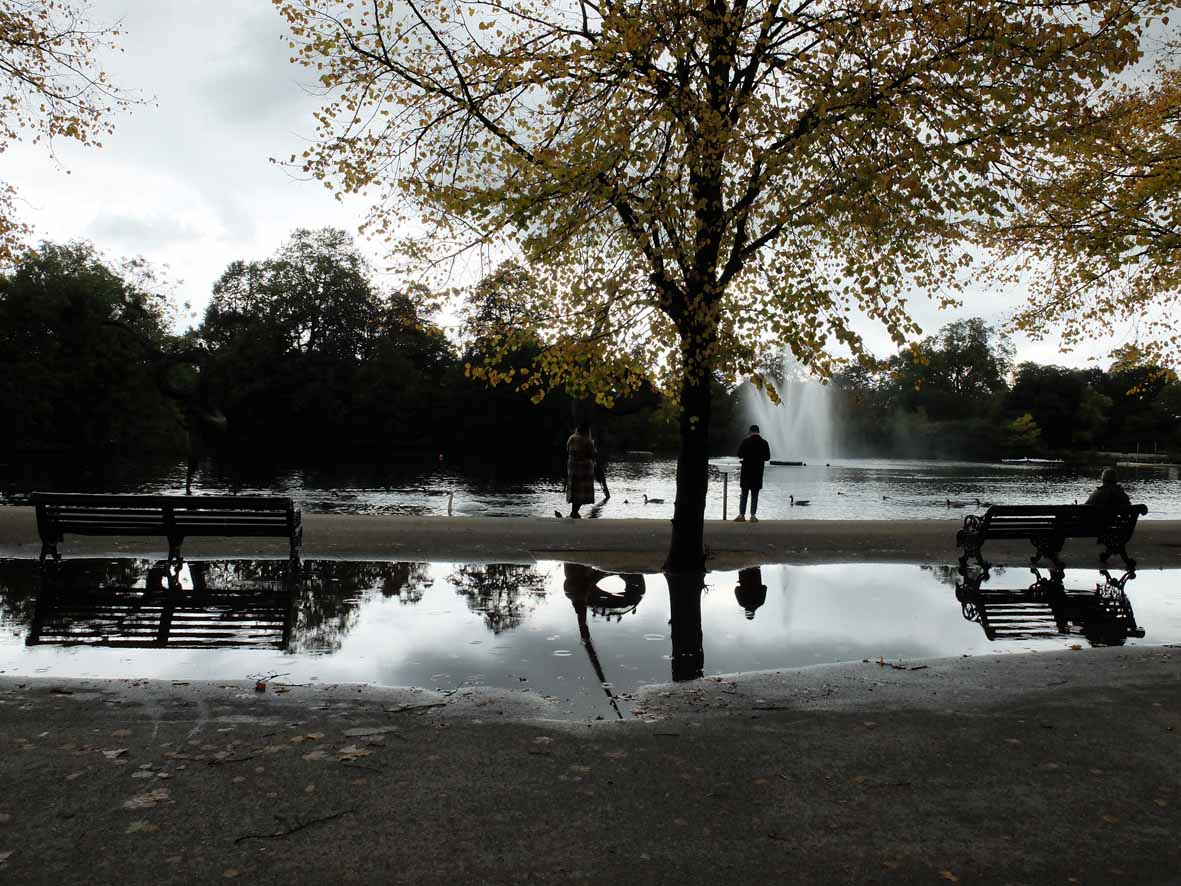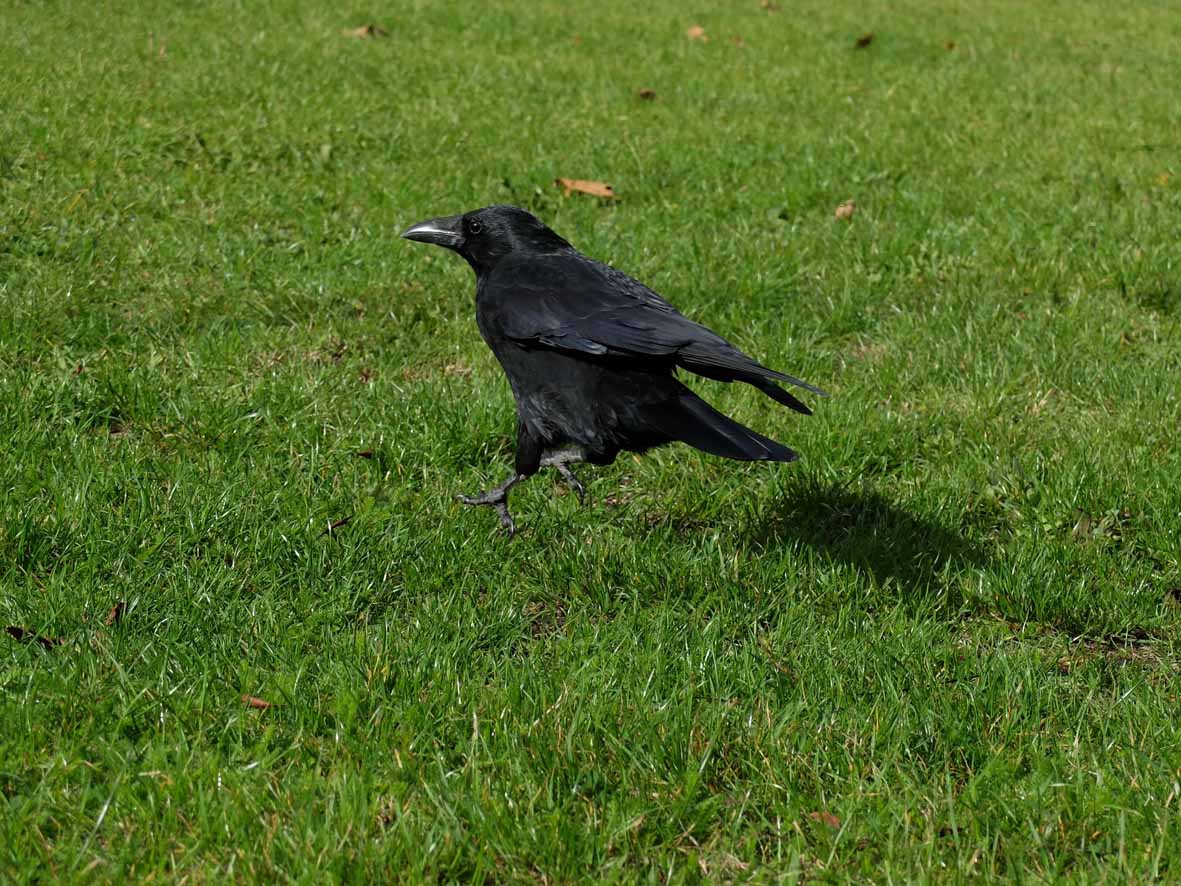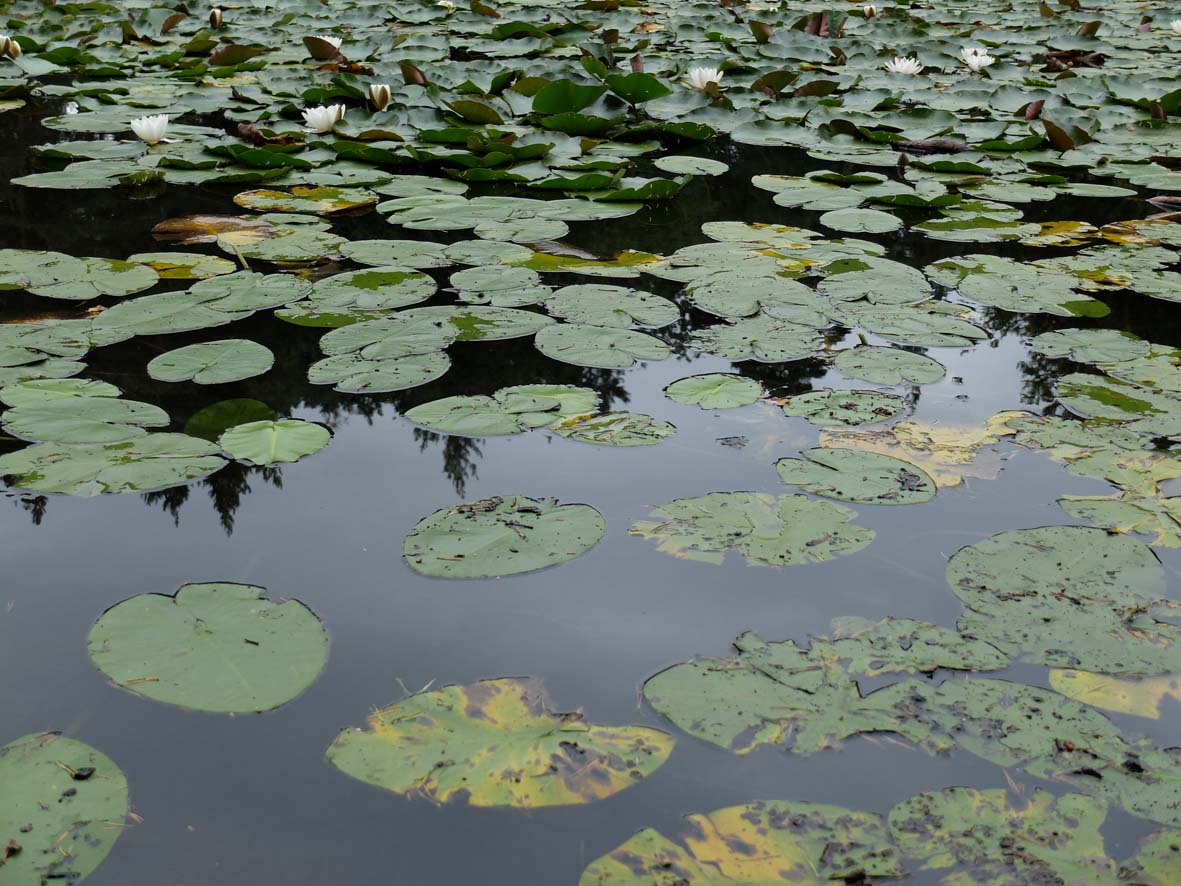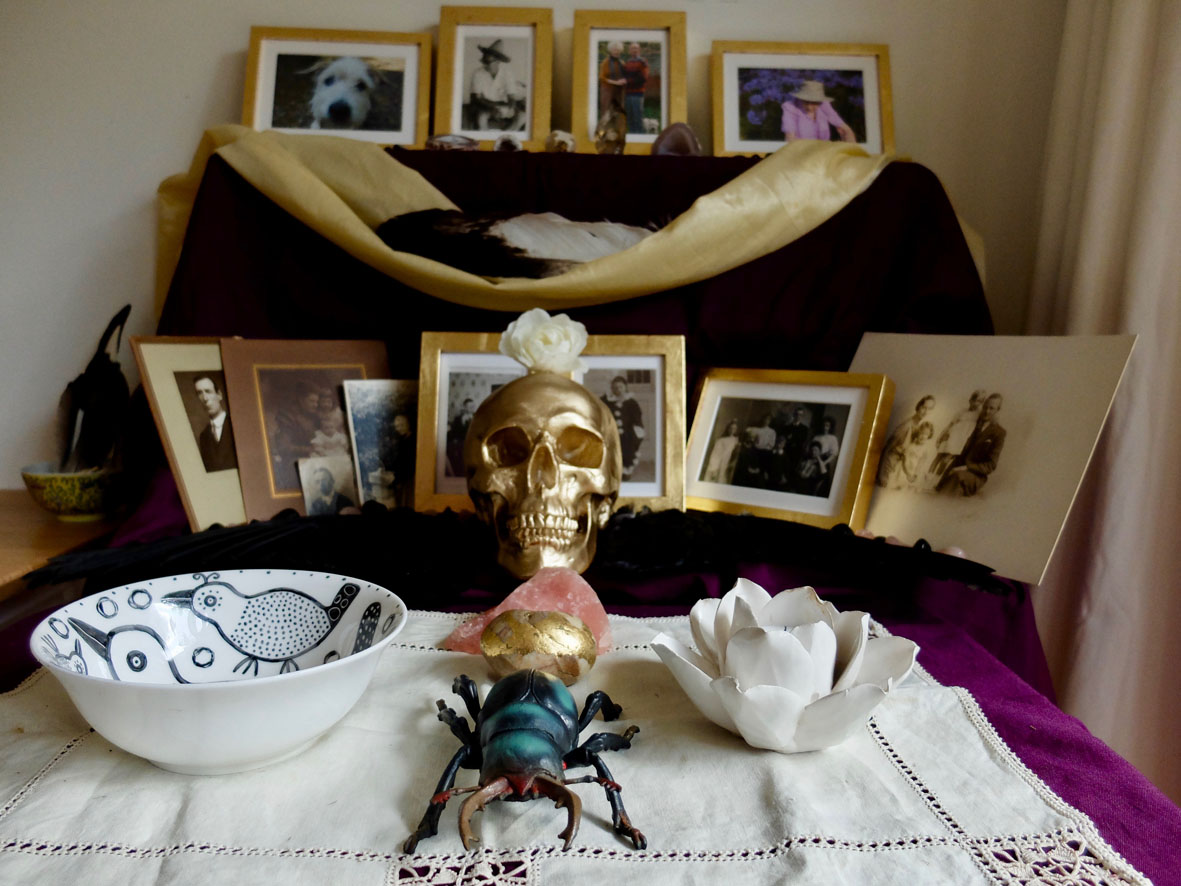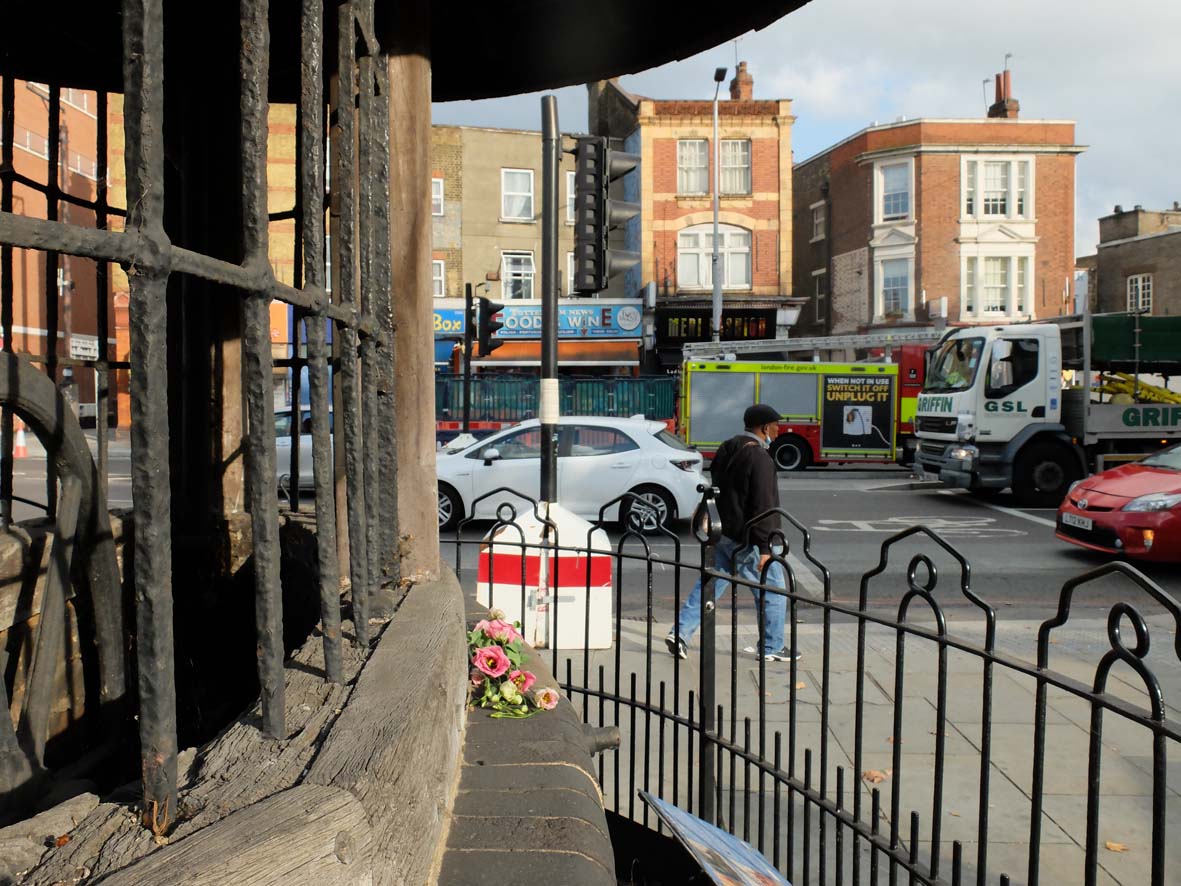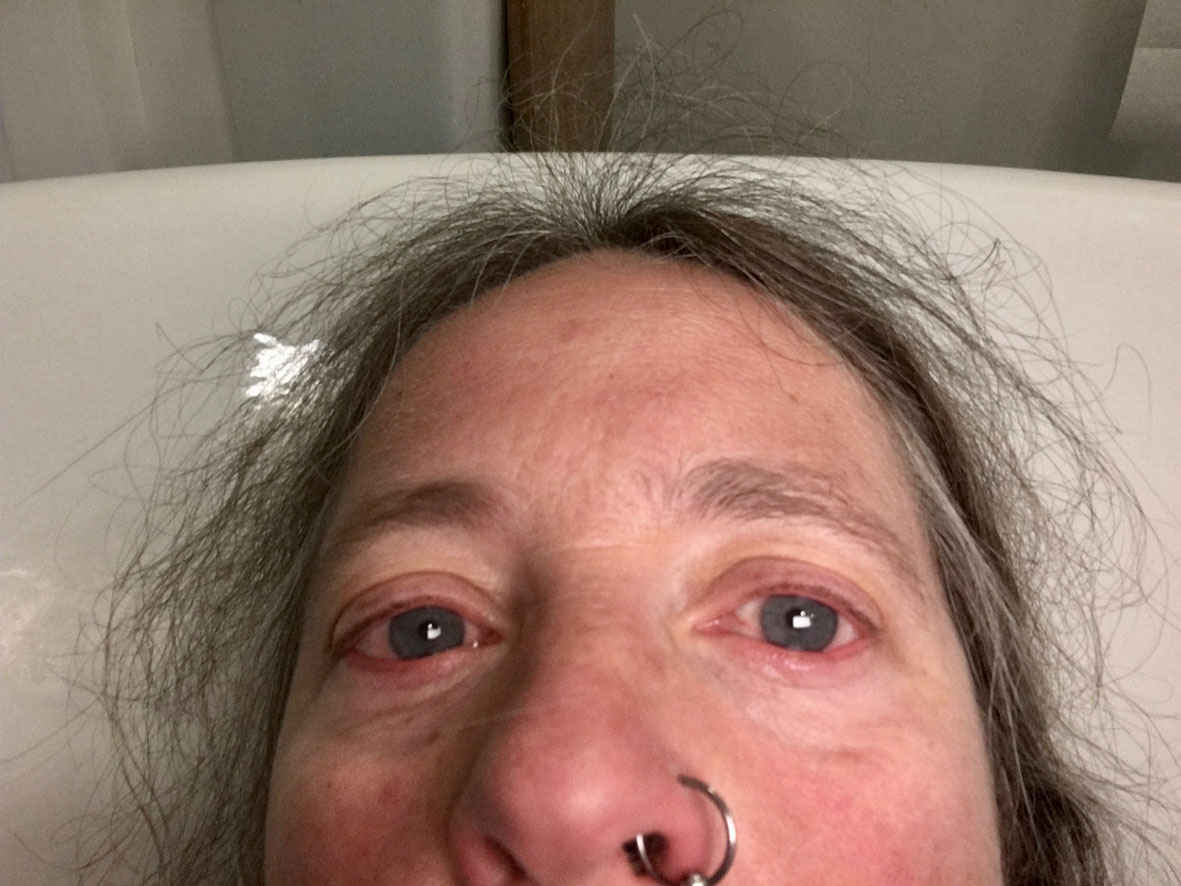28 Apr Funeral Weather
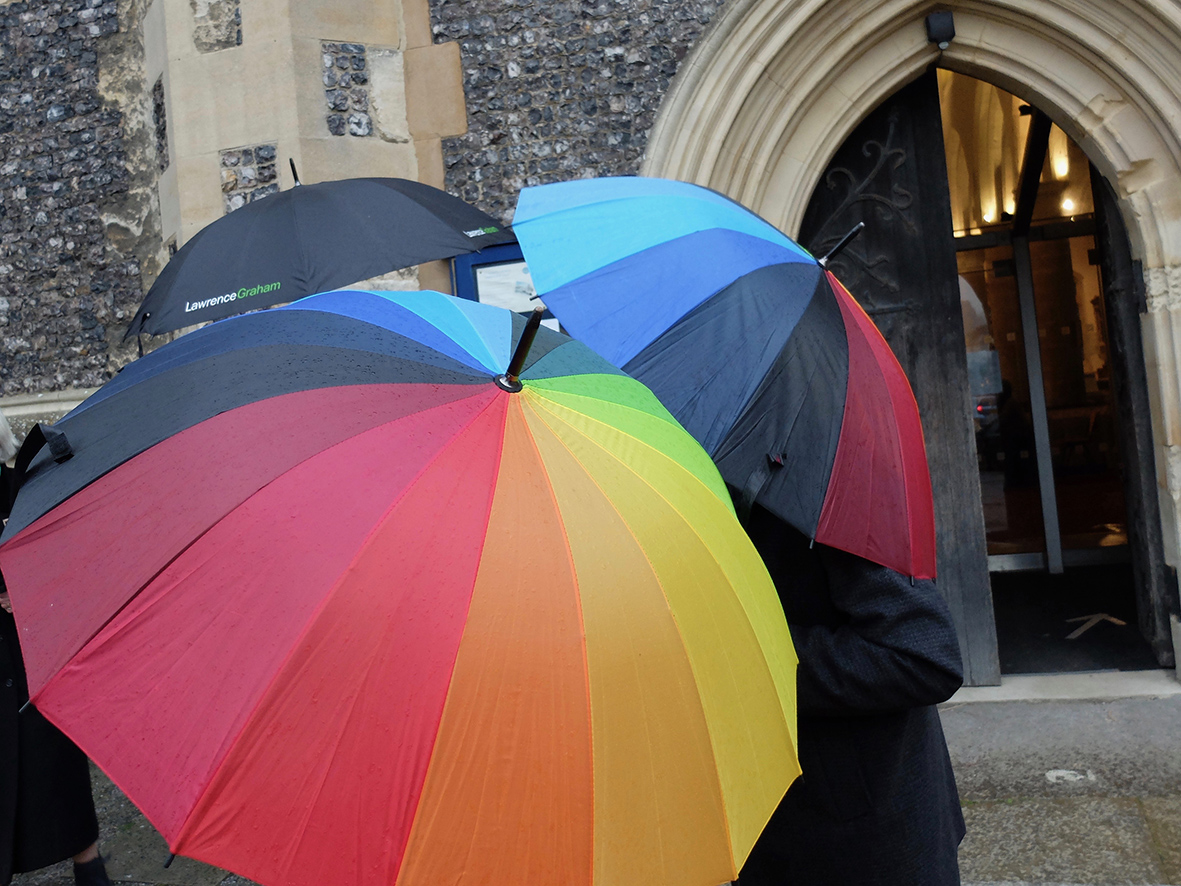 There is no stated dress code for this funeral. It is being held for an octogenarian, so perhaps formal is best. But it was a life lived well and long, so perhaps a flourish of colour to acknowledge their well-played ‘innings’.
There is no stated dress code for this funeral. It is being held for an octogenarian, so perhaps formal is best. But it was a life lived well and long, so perhaps a flourish of colour to acknowledge their well-played ‘innings’.
I settle for my mother’s home-made in the 1950’s black velvet coat, and a bright shawl. The coat has no buttons – I wonder to myself whether it is because button-holes were and still are a chore to make, even with my clever sewing machine. Instead I clutch it closed over my winter dress, which conceals thermal underwear, and step into the misty morning. Today I eschew pink fur hat, dog paraphernalia and hiking boots.
Our car has stayed put on our street over winter. On opening, I discover it is cultivating a spread of green mould. Despite the cold, we drive with open windows hoping to dry out the atmosphere. We skirt around the metropolis to what seems another world, way beyond the reaches of my lockdown-beaten-bounds.
I notice fresher air, fewer people, and struggle to use the car park payment system. I perch in the cold to eat my sandwich lunch, made at breakfast time in my familiar kitchen. I regret that the carefully prepared thermos, is still sitting on the kitchen worktop.
Outside the church, selected representatives from different strands of the well-loved deceased’s life negotiate greeting. Do we bump elbows or wave? Coming together for this rite of passage without the rituals of touch adds another layer of discomfort. My expressions of warmth and care are lost beneath my mask. I try a twitching eyebrow to make connection. My words feel lame. I wince overhearing another grapple with a genuinely offered “Sorry for your loss.”
We stumble through new rituals of sanitising hands, registering our contact details for ‘Track and Trace’. Alternate pews are blocked off with red tape. We sit in isolated pods, at least a pew away from backs hunched in sorrow. The choir of three sing hums at a distance while we stay mute. An inspiring eulogy and readings are given in the traditional British manner – words regimented over emotions that sometimes crack through.
But to my delight, in lavish and beautiful gestures, the British Sign Language interpreter brings real poetry with their embodied expression of the solemn words spoken. My tears roll in response to this direct communication of all that this event means, in this time.
Outside again, rain hammers down and draws our distanced conversations to a close. I miss my usual rain-proof jacket, return to the car with hair, coat and shawl soaked. The car steams. I sense the mould perk up, quietly continuing its life cycle.
